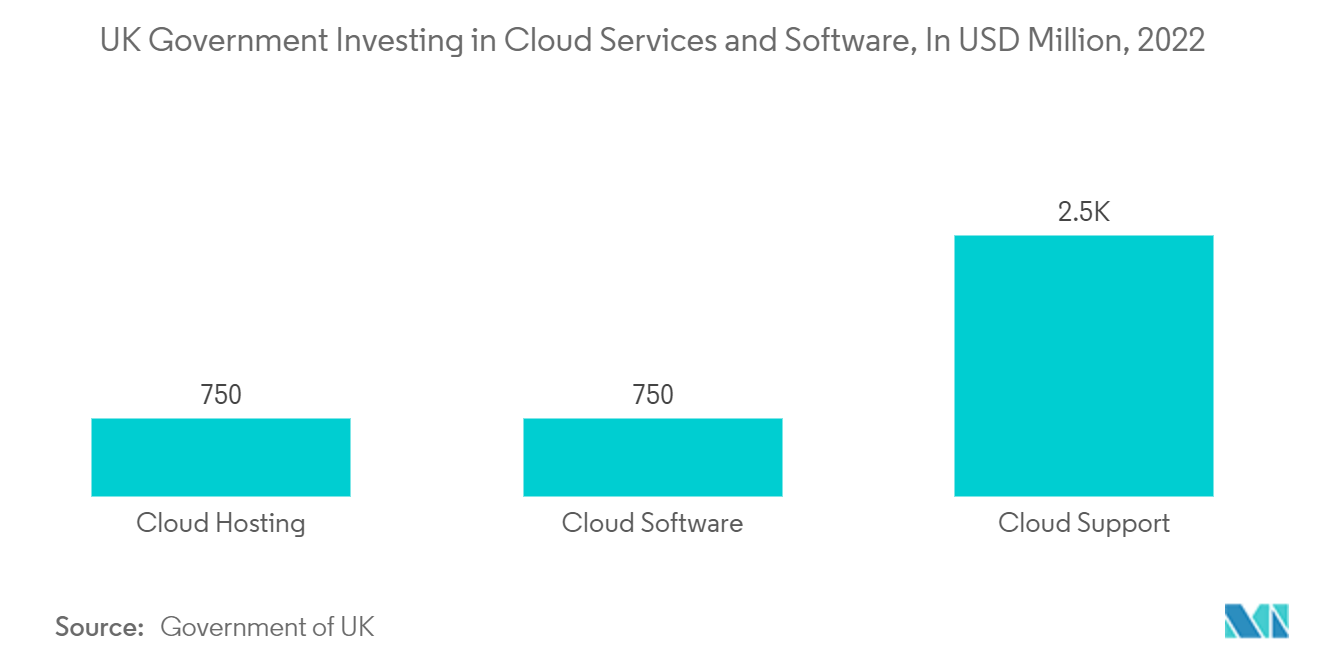Market Trends of Europe Workforce Management Software Industry
Increasing Adoption of Internet of Things (IoT) and Cloud-based Solutions is Expanding the Market
- A technology-driven workforce management system improves overall performance management and analytics. The internet of things(IoT) is one such technology that increases the efficiency of operations, thereby increasing workforce performance to bring together all stakeholders on a single platform to supervise and streamline all actions. The applications of IoT range from asset management to automated frameworks of the workforce to bring out the best work rate.
- The competition among companies in every sector is becoming so intense and should play an important part in stimulating growth and job creation in Europe. In Europe, a survey by SD Worx in October last year shows that six out of ten companies today use HR and people analytics to gain insights into areas such as staff shortages and absenteeism. Also, 21% of those surveyed indicated they would like to start using these tools in the coming year, a 15% increase from last year.
- Employers across Europe are now obliged to track their employees' time and attendance following a ruling by the European Court of Justice (ECJ). As a result, the ECJ ruled that member states must oblige employers to set up a system for the daily recording of working time. Such regulation increased the demand for workforce management software.
- IoT is considered one of the most trending technologies being used in offices, homes, and industries, and various collaborations and partnerships are gaining momentum for market growth in workforce management. As per the report by Good firms, around 34% of organizations in Europe are using IoT for their business processes, and another 12% are planning to do so shortly. Further, as indicated by the European Commission, many regional enterprises opt for cloud computing, as shown in the graph.
- For instance, in May of the previous year, Unilabs, Europe's leading diagnostics service provider, opted for ATOSS workforce management in the cloud for its activities in Switzerland. All 62 sites in different cantons will be linked to the software. The project aims to integrate employees into the working time management processes and achieve more flexible duty scheduling in the laboratories while creating greater transparency in all matters revolving around working hours.

United Kingdom is Expected to Hold Significant Market Share
- The increasing demand from businesses/organizations across the country for adaptability and flexibility and the organization's rising focus on increasing workforce productivity and improved employee experience are expected to drive the studied market growth in the United Kingdom region.
- Employment in the private sector is also increasing, forcing many organizations, especially human resource management departments, to adopt workforce management solutions to manage various functions.
- The Manufacturing, Travel & Transport, and Retail sectors are expanding rapidly, leading the market in terms of the adoption rate of these management software systems, thus driving the studied market growth. Further, good productivity is crucial for the success of any organization. Enterprises are striving hard to enhance the productivity of their employees, reduce costs, and improve business process efficiency.
- The continued transition to remote working brought on by the pandemic helped to sustain the growing demand for public cloud services in the UK. To automate labor and business processes necessary for remote work environments, businesses in the UK are increasingly turning to cloud services.
- The country is witnessing significant investment in the deployment of workforce scheduling software, especially in the healthcare sector. For instance, in January 2021, the Minister of Care announced USD 10.3 million to support digital shift organizing across 38 NHS trusts, allowing staff to spend more time with patients. The investment is part of a USD 35.7 million national fund for all NHS doctors, nurses, and other clinical staff on e-rostering systems.
- In March last year, the UK government initiated an agreement series for software and cloud services that could total up to GBP 5 billion (USD 6.58 billion). The tender for several technologies under the fluffy eponymous computing model is released by the central government procurement authority Crown Commercial Services (CCS) under the aegis of G-Cloud 13.
- The country is also witnessing the launch of many new workforce management solutions. For instance, in June previous year, SD Worx, an HR and payroll services provider, empowered UK businesses with the launch of its European market-leading workforce management solution. SD Worx became the first UK Payroll and HR provider to offer a fully integrated workforce management (WFM) SaaS solution with all the capabilities of a stand-alone WFM product.


